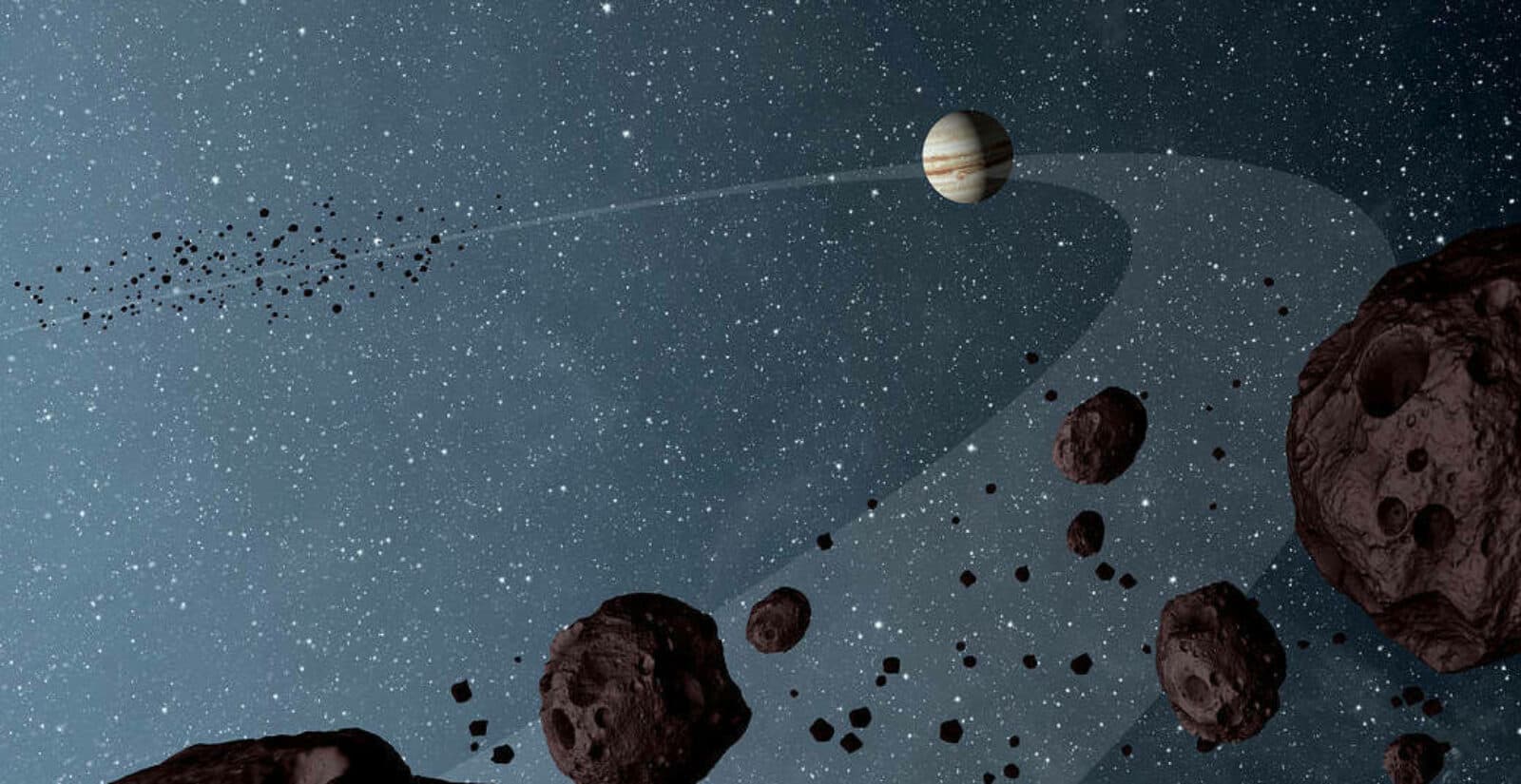Demythologizing the Origins of the Trojan Asteroids
by Adam Hadhazy
Part 3 of our 'Looking Ahead to JWST' series explains how the next-generation telescope could help us learn the true origins of a mysterious group of space rocks

The Author
The Researcher
The next era of deep space science will begin with the launch of JWST come late 2021. Debuting a suite of new technologies to keep its instruments super-chilled, JWST will take pristine, high-resolution observations of faint infrared light, enabling novel astrophysical investigations and a farther look back than ever before into the early universe.
Earlier this year, NASA announced the telescope's first year of slated observations—dubbed Cycle 1—based on proposals submitted by researchers worldwide. Several Kavli Institute-affiliated researchers are principal or co-principal investigators for approved Cycle 1 observation programs. This article is the third in a series profiling these greenlit JWST observer programs.
Researchers are pretty sure that over the last few eons, the solar system's planets have sedately gone through their orbits, logging year after year. What researchers are unsure about, however, is whether the planets originally formed where they are now, or if some turbulent shifting of orbits and flinging around of sub-planetary space rocks occurred after the planets took shape.
One key to solving this mystery is the largest population of solar system bodies never to have been visited by spacecraft—the Jupiter trojan asteroids. Called Trojans for short, these approximately 10,000 rocks are locked into orbits leading or trailing the gas giant Jupiter. As such, the Trojans are divided into two bunches, cleverly called the "Trojan" and the "Greek" camps, after the combatants of the ancient Trojan War. (For extra humanities credit, the rocks are named after figures in Greek mythology associated with the war, such as Achilles, Hektor, and Patroclus.)
Telescope studies of the Trojans have intriguingly shown that many are dark red in color and resemble the objects found in the Kuiper Belt—the ring of bodies out past Neptune (the most famous of which is Pluto). Those observations suggest some solar system event flung all these former Kuiper Belt residents inward toward the Sun and that Jupiter's substantial gravity captured some of the scattered flock.
An approved JWST program should gather critical new clues into the puzzling origin story of the Trojans by gathering spectra, or light signatures, of several Trojans using JWST's unique infrared vision.
"Only JWST can obtain spectra of these objects beyond about two microns. That's the spectral region that contains all of the spectral information about the ices, organics, salts, and silicates that the Trojans are made out of, which in turn tell us where they come from," says program principal investigator Michael Brown, the Richard and Barbara Rosenberg Professor of Planetary Astronomy at the California Institute of Technology. Brown shared the 2012 Kavli Prize in Astrophysics for his work discovering and characterizing some of the largest members of the Kuiper belt, explaining his keen interest in sorting the Trojans out.
"The Trojans' existence has long been mysterious, as it is not obvious how to get or keep such things locked into this particular resonance," adds Brown, referring to the orbital configuration the bodies maintain with Jupiter. "One exciting idea that we are trying to test is that the Trojans were captured in the earliest stages of the Solar System from the population that formed beyond Neptune, meaning that they are genetically related to objects from the Kuiper Belt."
"The only way for this idea to be true," Brown continues, "is if the entire solar system underwent a dynamically violent reorganization early on, as opposed to the idea that the solar system more or less evolved smoothly to what we see today. So understanding where these Trojans came from tell us about the earliest history of the Solar System."
In this fact-finding mission, JWST will not be alone. The Trojans scrutinized by the telescope will (at last!) be visited by a spacecraft between 2027 and 2033. That spacecraft is called Lucy, a NASA mission like JWST, and it is set to launch later this year coincidentally right about the same time as JWST. The two missions will thus complement each other, vastly expanding our knowledge of the Trojans and these bodies' ties to all the other worlds on our cosmic block.
"The key point of this program is that all of these objects will be visited by the Lucy spacecraft," says Brown. "We will eventually get detailed up-close pictures and colors and geology of these objects, which will allow us to put the JWST observations into a truly geological context, and, as importantly, allow us to take the Lucy observations of a small number of targets and put those into the context of the much larger population of asteroids that will be observed with JWST."
Also lending expertise to the program is coinvestigator Richard Binzel, a Professor of Planetary Science at the Massachusetts Institute of Technology and a member of the Kavli Institute for Astrophysics and Space Research.
The insights delivered by JWST should be many, and they will be followed on several years later by Lucy. If all goes according to plan, any myths regarding the origins of the Trojans will be dispelled, telling us a great deal more about the goings-on in the young solar system.